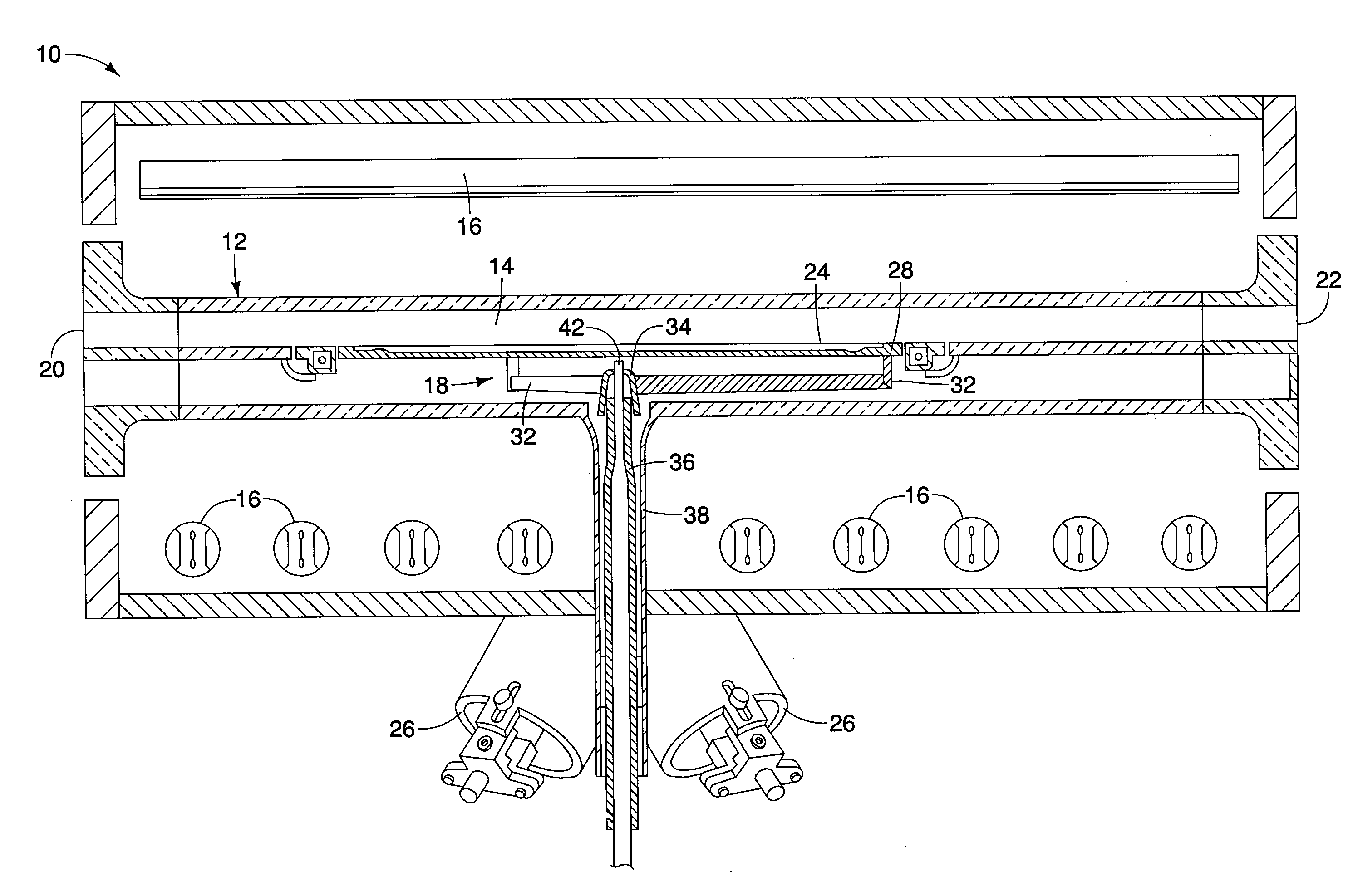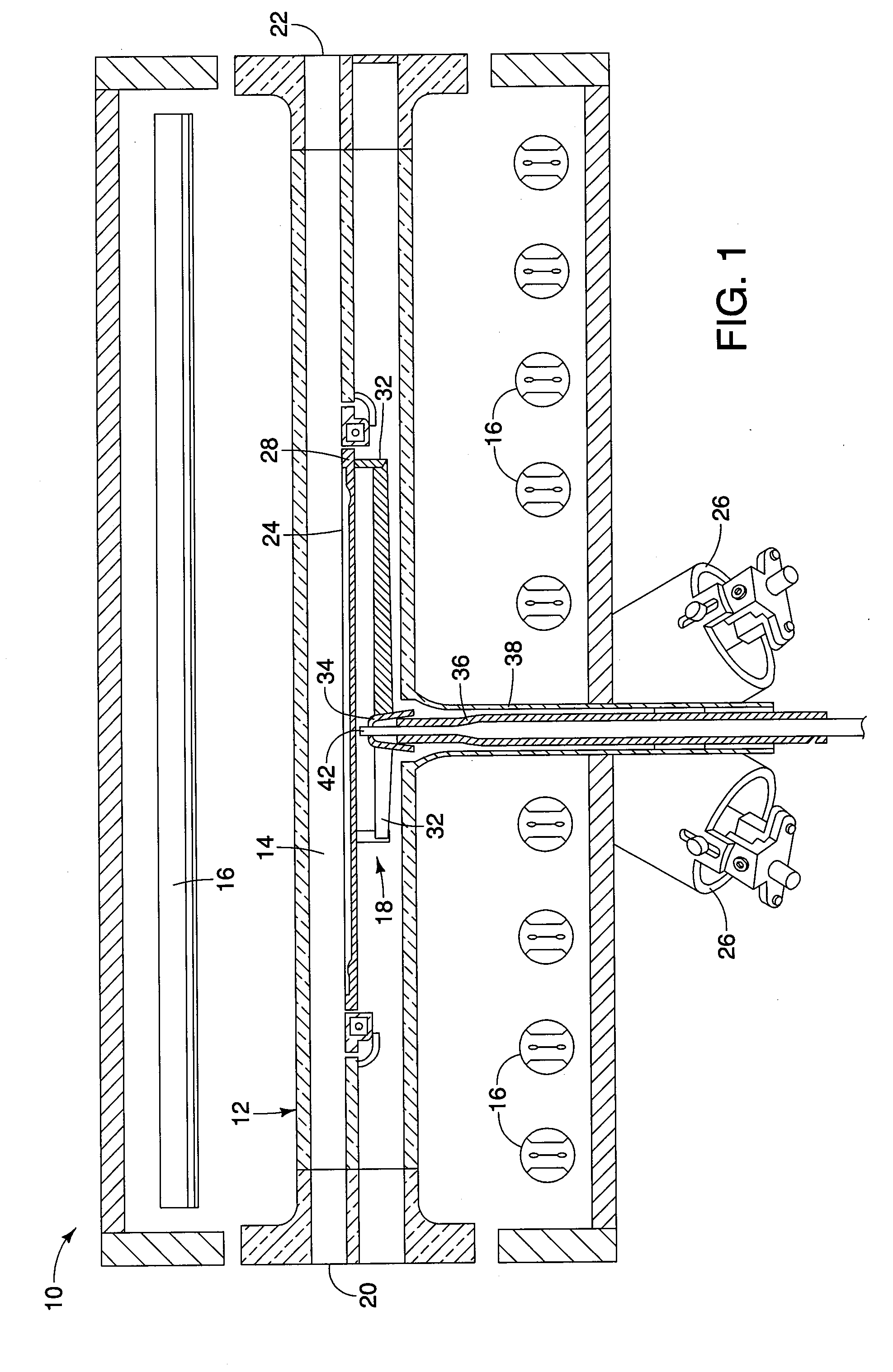Thermocouple
a technology of thermocouples and junction beads, which is applied in the direction of heat measurement, process and machine control, instruments, etc., can solve the problems of junction beads deformation, affecting the uniformity of the resulting structure on the surface of the substrate, and unusable areas on the surface of finished substrates, so as to reduce the amount of temperature measurement. the effect of dri
- Summary
- Abstract
- Description
- Claims
- Application Information
AI Technical Summary
Benefits of technology
Problems solved by technology
Method used
Image
Examples
Embodiment Construction
[0032]Referring to FIG. 1, an exemplary embodiment of a chemical vapor deposition (“CVD”) reactor 10 is shown. While the illustrated embodiment is a single substrate, horizontal flow, cold-wall reactor, it should be understood by one skilled in the art that the thermocouple technology described herein may be used in other types of semiconductor processing reactors as well as other applications requiring accurate temperature sensors. The reactor 10 includes a reaction chamber 12 defining a reaction space 14, heating elements 16 located on opposing sides of the reaction chamber 12, and a substrate support mechanism 18. The reaction chamber 12 is an elongated member having an inlet 20 for allowing reactant gases to flow into the reaction space 14 and an outlet 22 through which the reactant gases and process by-products exit the reaction space 14. In an embodiment, the reaction chamber 12 is formed of transparent quartz. It should be understood by one skilled in the art that the reactio...
PUM
 Login to View More
Login to View More Abstract
Description
Claims
Application Information
 Login to View More
Login to View More - R&D
- Intellectual Property
- Life Sciences
- Materials
- Tech Scout
- Unparalleled Data Quality
- Higher Quality Content
- 60% Fewer Hallucinations
Browse by: Latest US Patents, China's latest patents, Technical Efficacy Thesaurus, Application Domain, Technology Topic, Popular Technical Reports.
© 2025 PatSnap. All rights reserved.Legal|Privacy policy|Modern Slavery Act Transparency Statement|Sitemap|About US| Contact US: help@patsnap.com



